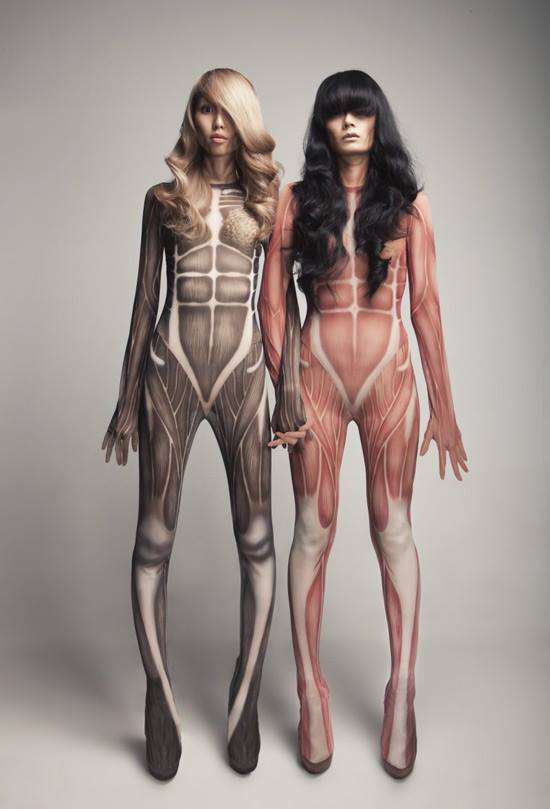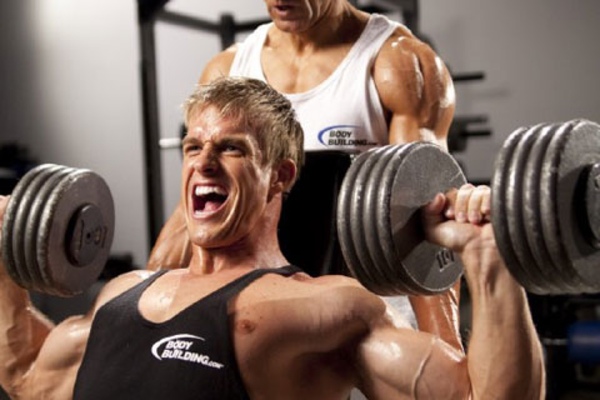If you’ve been immersed in the world of fitness long enough, you know by now that muscles are the epicenter of action. Skeletal muscles do not only allow us to push, sprint, and jump but they also shape the body to look proportional or fit and strong, if you prefer. There are 650 skeletal muscles in a human body, and while not all of them can be controlled voluntarily (cardiac and smooth muscles, for instance), most of them are engaged in all of our everyday movements. To get a better understanding of what to do in the gym, and how it affects your muscles, take a closer look at these five muscle facts.
Muscle Facts That Will Help Inform Your Fitness Routine

Muscles are Water
While muscles consist of fibers (cylindrical cells surrounded with two types of connective tissue) their water content is around 70%. It is not to say that water has something to do with building muscles but the same logic does not apply to protein. While water helps body regulate temperature as well as it aids its metabolic processes, amount protein that is actually used to synthesize new muscle cells is estimated to be around 0,82 g/lb.
Conclusion: You don’t need to overconsume neither to grow muscles. There are other important factors to consider.

Muscles Consist of Different Fibers
The fibers we mentioned above come in two types. Slow twitch or Type I are the fibers that use oxygen for fuel and contract more slowly, which gives them the ability to work continuously without fatigue (aerobic training). Fast twitch or Type II fibers are contracting much faster and are good for generating strength and speed in bursts. They also fatigue much quicker and are more likely to fire up during strength training. Type IIa and IIb fibers are good at both aerobic and anaerobic training, and can fire up very quickly.
Fiber composition is unique to each individual. Knowdledge of your fiber composition could help determine the best type of training for a certain body part. But even if you do not have it, you can always rely on general knowledge instead. It’s definitely known that calves are made of mostly slow twitch type fibers, which explains why running significantly affects calf size. Chest, on the other hand, has more of the fast twitch type fibers, for which weightlifting exercises like bench press are considered more effective.
While there are suggestions that human body can convert one type of fibers to another, depending on the type of training, it has not been scientifically proven. So it’s probably best to choose activities that make you want to come back to the gym.
It’s Not Easy To Lose Muscle Mass
Losing muscle mass isn’t as easy as it may seem, probably because it is not as easy to acquire in the first place. Muscle water retention or lack thereof might also mask your muscle growth or give an appearance of growing/shrinking muscles. Lean muscle mass, however, comes in mere few pounds over the years of training. So unless you are purposefully starving yourself over prolonged periods of time, your muscle mass will probably stay right where it is, provided that you give your muscles a good workout regularly.
Body fat and water content, on the other hand, may drastically change the appearance of one’s physique. Thankfully, the logic here is more straightforward and observable. The more fat and water there is, the bigger the shape. Conversely, a person may appear more ‘muscular’, if there is less fat and water content in his or her body. No particular body tissue is inherently good or bad. It’s a game of proportions.

Muscles Don’t Count Repetitions
Set and rep count is not an exact science. Conventional classification (1-5 for strength, 6-12 for pump/size) may be helpful for novices but is not written in stone. Weights also differ for each individual. Beginners may grow muscle with 15-20 reps and light weights just because at this stage body responds to any kind of stimulation. On the other hand, you can train your muscles to failure with weights that you can only lift for 5 repetitions and still gain muscle mass just because it’s a natural body response to stress – growing muscles in size to make lifting heavy things easier. This is a way the body adapts.
Research shows that it doesn’t really matter whether you are lifting light weights more often or heavy weights less frequently. As long as muscles develop fatigue during a workout, it might stimulate growth.

Muscle Tone is Real
Muscle tone may seem like an elusive concept but research suggests that it can be attributed to the state where muscles are partially contracted. In this state, your body may appear more ‘fit’, but it is not clear just how long one can sustain this ‘effect’. Experts say that in order to achieve muscle tone, you should opt for heavier weights, slower speed (increased time under tension), and a better mind-to-muscle link.
While the human body is a complex mechanism that still presents a world of unknown to us, the combination of a straightforward workout routine and diet remains to be the best way to achieve that coveted fit body image.
Mona Liz
Latest posts by Mona Liz (see all)
- All About Sweat: 3 Must-Know Facts - June 15, 2016
- Mermaid Fitness Trend Is A Real Thing - June 13, 2016
- This Fitness Trend Got Millions People Interested - June 10, 2016















Hey, thanks for commenting Timo.